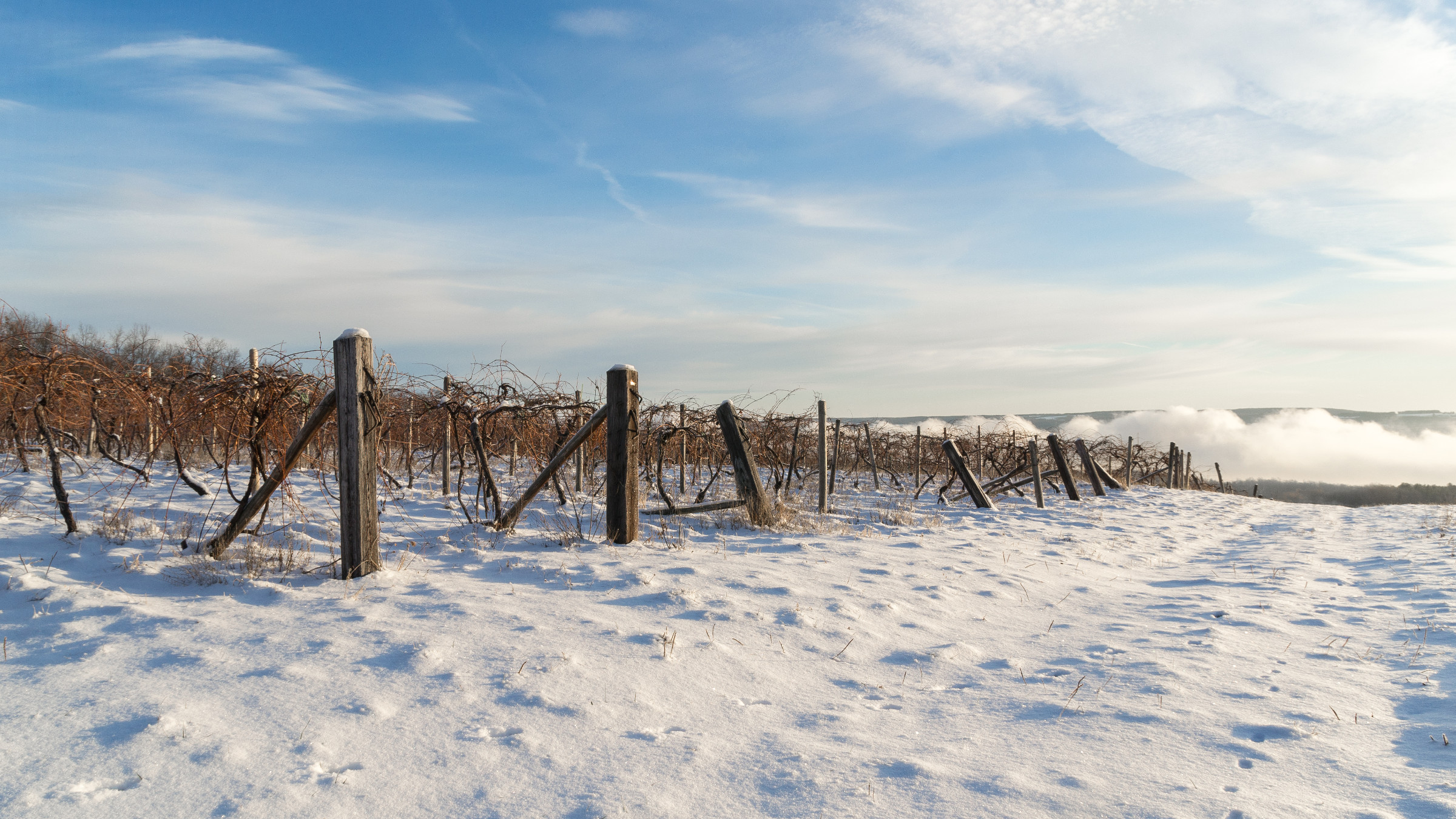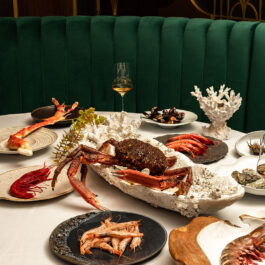The winemakers of sunny southern Europe and California have reaped what they’ve sown – in the best sense of the term, with 2015 expected to produce an exceptional vintage in many regions – and can begin to enjoy the calm of the colder months. But as these fair-weather vintners are donning house slippers and planning winter holidays, winemakers further north are awaiting the start of their rather remarkable harvest season.
These hardy producers are in the business of Icewine (as they say in Canada; or alternatively, ice wine in America and Eiswein in Germany), perhaps the most fragile of all the oeno-arts.
Icewine? So, Wine That’s Been Frozen?
Not really. The name can be a bit misleading, as Icewine is never frozen after fermentation and isn’t even served particularly cold.
The moniker derives from the harvesting process in which grapes are left to freeze on the vine before being plucked, pressed and fermented. It’s a delicate procedure, the goal being to pick the grapes precisely when the right temperatures hit and allow for the water inside them to crystallise – around -7C. This could happen as early as December or as late as February, depending on the region.
Due to the unpredictability of weather patterns, harvesting usually takes place on a moment’s notice in the dead of night or wee hours of the morning, just as the right conditions have set in, and requires a workforce large enough to pluck the entire crop in just a few short hours. Once harvested, the grapes are immediately subjected to intense hydraulic pressure in an unheated factory.
Why The Rush?
The water inside a grape freezes faster than its acid and sugars, separating the elements for a short amount of time. If pressed while still frozen, the resulting liquid will have high concentrations of sugar and undiluted acid, with the water remaining behind as ice.
It’s precisely this process, only when executed correctly and at the right moment, that yields the intense, pure and highly sought-after flavours of Icewine, striking a delicate balance between acidity and sweetness not usually found in dessert wines. Think smooth notes of honey mingled with bright bursts of apricot, peach or exotic mango in whites, and sumptuous dark berries with spicy undertones in reds.
But if the harvest method is Icewine’s saviour, it’s also the wine’s greatest demon. Birds, boars and other beasts love to chow down on the succulent grapes as they ripen, while disease, rain, wind and hail all number among the crop’s mortal enemies. Waiting for the perfect frost, then, is a tricky game – and sometimes, when the wine gods are feeling especially cruel, the frost doesn’t come at all before the grapes wither on the vine.
Adding insult to injury, each single grape bears only one drop of Icewine, meaning the yields are small even when conditions are optimal.
Who Came Up With This Crazy Idea?
That would be the Germans, circa 1794, though evidence exists that the Romans were at it much earlier. The practice eventually arrived in Canada, brought from the Old World by German and Austrian immigrants, where it finally found commercial success in the vineyards of Ontario and British Columbia in the 1970s and ‘80s.
Though Icewine is produced in many countries throughout Europe and the Americas today, more than 75% of the world’s yield is found in Germany or Canada. Both countries have laws in place strictly monitoring the quality of their Icewine vintages, and top-notch wines can be expected as a result – but so can top-tier prices.
Those in search of a better bargain might look toward wines made using cryogenic extraction, in which grapes are artificially frozen for a more consistent and less expensive product. Labelled “iced wine”, “icebox wine” or “vin de glacière”, these wines are championed by advocates for their controllable quality and lower price point, but others say nothing beats the flavour of an Icewine naturally frozen and harvested from the vine.
Okay, Okay, I’ll Get A Bottle, But How Do I Serve It?
Much like white wine, Icewine should arrive at the table chilled but not too cold. It’s also best served in a white wine glass, which allows the wine to breathe and reveal its flavour bouquet without overwhelming the small serving size of just 2 ounces (6 centilitres).
Though classified as a dessert wine for its sweetness, a good rule of thumb to use when pairing with food is to serve nothing sweeter than the Icewine itself. A platter of assorted cheeses is the perfect companion, but for those with an insistent sweet tooth, a basic cheesecake will pair nicely – just hold the sugary toppings. And enjoy.
Article by Jessica Keller














Sorry, the comment form is closed at this time.